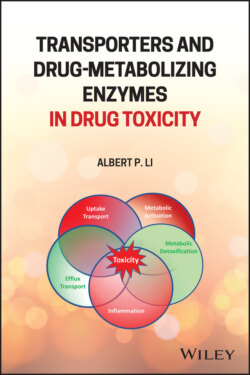Читать книгу Transporters and Drug-Metabolizing Enzymes in Drug Toxicity - Albert P. Li - Страница 87
3.11.1 Drug Metabolism and Toxicity
ОглавлениеThe legacy of terfenadine drug interactions: Drug interactions with terfenadine have historical significance. It was the first clear indication that a P450 inhibiting perpetrator drug could increase the plasma concentration of a coadministered victim drug that is a substrate of the inhibited P450 isoform, resulting in toxicity. As a result, US FDA published the first drug–drug interaction guidance document proposing a mechanistic‐based approach to identify perpetrator and victim drugs of drug–drug interactions. A major advance catalyzed by FDA’s proposed strategy is the recognition of species differences in drug metabolism. The FDA 1997 guidance document proposed that before approval for marketing, a drug needs to be investigated using in vitro human drug metabolizing enzyme‐containing systems, with focus on human P450 isoforms, on whether its metabolism can be affected by the existing drugs that are inhibitors or inducers of drug metabolism, as well as the drug’s potential to inhibit or induce drug metabolism of P450 isoforms that are responsible for the metabolism of marketed drugs [191]. The recommended in vitro human hepatic metabolic systems include human liver microsomes, cDNA‐expressed P450 isoforms, and human hepatocytes [192]. This strategy is now globally recognized by international regulatory agencies for drug approval, has been continuously been improved, with the most recent US FDA guidance involving also uptake and efflux drug transporters [193]. The validity of this new approach is supported by known clinical cases of drug–drug interactions based on transporter activities [194].
Terfenadine metabolism and toxicity: Terfenadine causes prolongation of the QT interval due to suppression of specific delayed rectifier ventricular K+ currents as a result of the blockade of the hERG‐IKr channel [195–198]. The lack of cardiotoxicity in patients administered terfenadine alone is a result of its rapid metabolic clearance at the therapeutic dose, as clearly demonstrated in a clinical study where detectable unmetabolized terfenadine was only observed in patients coadministered ketoconazole, and not in patients administered only terfenadine [187]. CYP3A4 is the major P450 isoform responsible for the metabolic clearance of terfenadine, resulting in hydroxy‐terfenadine which is further oxidized to fexofenadine, the carboxylic acid metabolite of terfenadine.
